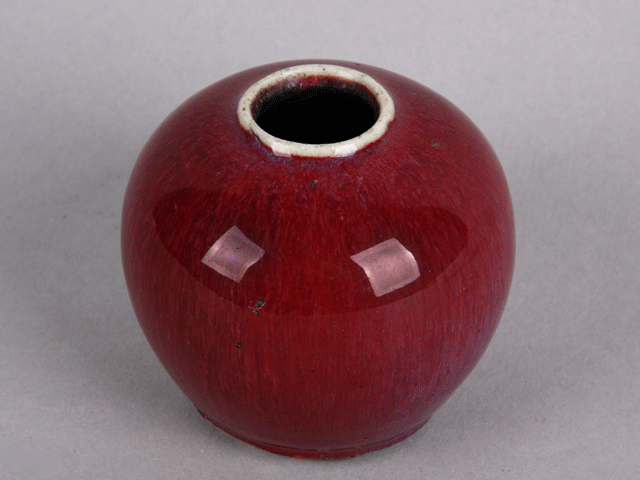
2012.91.93, red glaze jar; Qing dynasty, 1644–1911
Eason Eige Collection; photo by B. Bernard

2012.91.93, red glaze jar; Qing dynasty, 1644–1911
Eason Eige Collection; photo by B. Bernard
The surface of this jar is so shiny, the photographer's light diffusers are clearly reflected. During the Ming dynasty, potters used copper-based glaze to create a brilliant red (xian hong or "fresh red") but the technique fell out of use and the associated technical secrets were forgotten. In the Qing dynasty, very similar red glazes were developed at the imperial kilns at Jingdezhen, in an effort to regain what had been lost. One Qing result, shown above, is known as langyao hong ("Lang kiln red"), oxblood, or sang de boef. The white rim, where the glaze has run off before firing, is a common and deliberate effect.
The jar is only 2 1/2 inches (6 1/2 cm) tall. For a slightly different view of the jar, please click here. Chinese potters also combined red copper glaze with blue glaze on Jun ware, as we describe on this page
To see a bowl of the same ware, please click on the thumbnail image below.
See source code for copyright information. Page last revised on February 25, 2016. Please report problems to toh@unm.edu